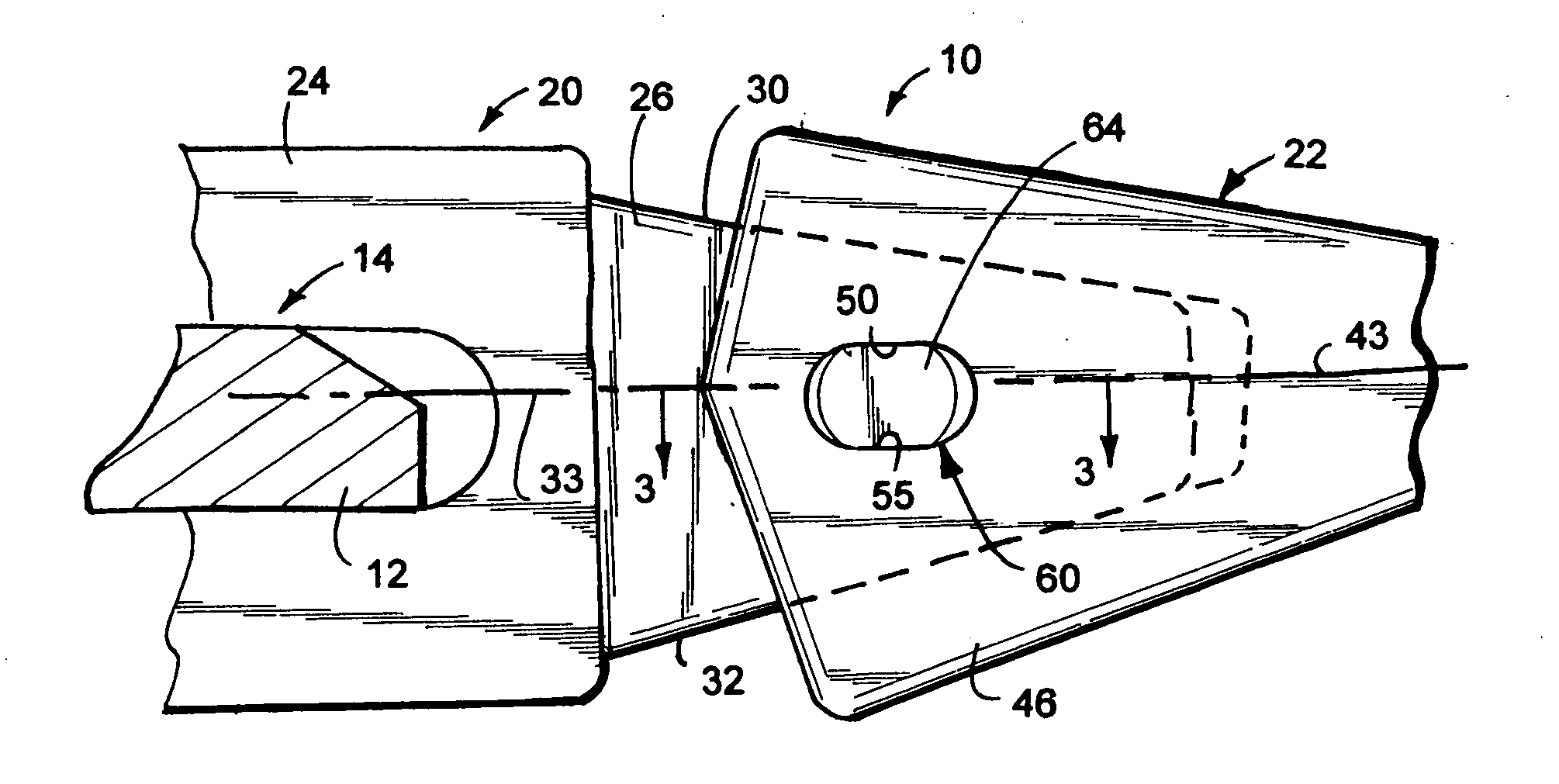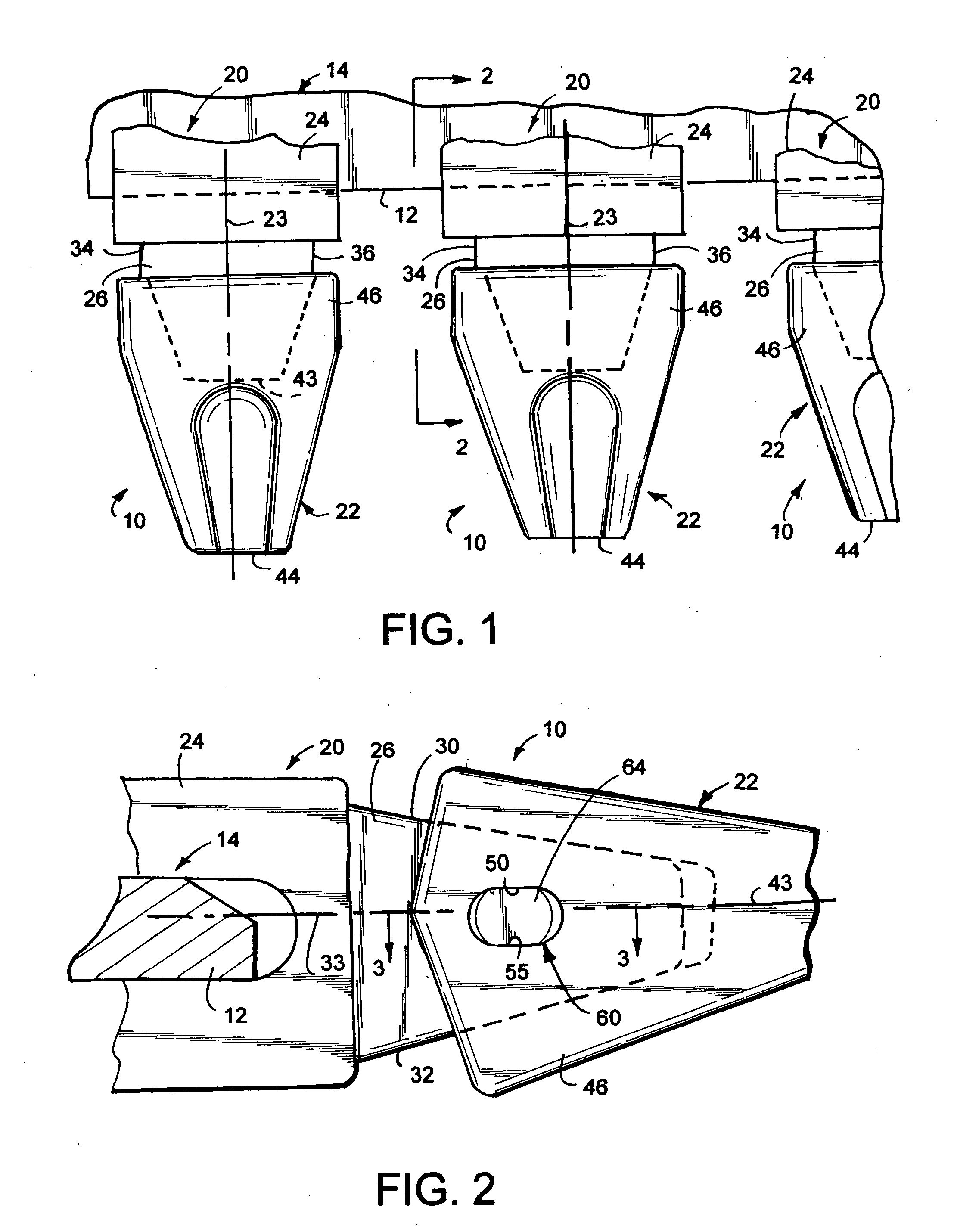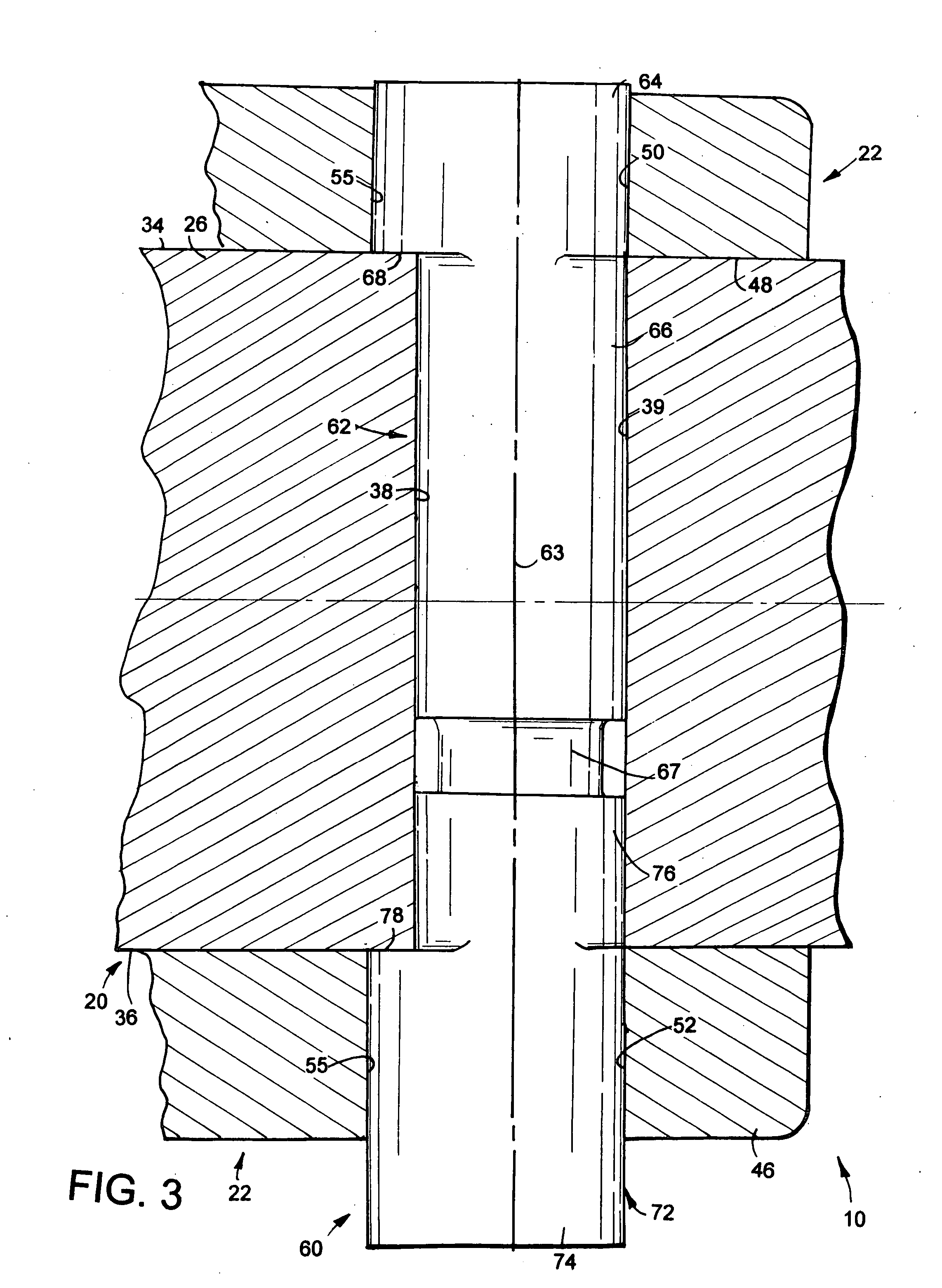Pin assembly for a two-part ground engaging tooth system and method for connecting components of a two-part ground engaging tooth system to each other
a two-part, ground-engaged technology, applied in the direction of soil-shifting machines/dredgers, couplings, mechanical equipment, etc., can solve the problems of affecting the repair/replacement of the replacement part, the cutting edge of the replacement part sometimes quickly wears and dulls, and the component parts of the digging tooth assembly experience considerable and rapid wear, etc., to achieve the effect of enhancing the ease of repair/replacement and adding structural rigidity to the pin
- Summary
- Abstract
- Description
- Claims
- Application Information
AI Technical Summary
Benefits of technology
Problems solved by technology
Method used
Image
Examples
Embodiment Construction
[0049] While the present invention is susceptible of embodiment in multiple forms, there are shown in the drawings and will hereinafter be described various preferred embodiments of the present invention with the understanding the present disclosure is to be considered as setting forth exemplifications of the invention which are not intended to limit the invention to the specific embodiments illustrated and described.
[0050] Referring now to the drawings, wherein like reference numerals indicate like parts throughout the several views, there is shown in FIG. 1 a series of two-part digging assemblies, with each assembly being identified generally by reference numeral 10. As is typical, the two-part assemblies are arranged in horizontally proximate relation relative to each other across a forward edge or lip 12 of a ground engaging implement such as a bucket or the like 14. It should be appreciated that during operation, the bucket or shovel 14, to which the two-part system 10 is atta...
PUM
 Login to View More
Login to View More Abstract
Description
Claims
Application Information
 Login to View More
Login to View More - R&D
- Intellectual Property
- Life Sciences
- Materials
- Tech Scout
- Unparalleled Data Quality
- Higher Quality Content
- 60% Fewer Hallucinations
Browse by: Latest US Patents, China's latest patents, Technical Efficacy Thesaurus, Application Domain, Technology Topic, Popular Technical Reports.
© 2025 PatSnap. All rights reserved.Legal|Privacy policy|Modern Slavery Act Transparency Statement|Sitemap|About US| Contact US: help@patsnap.com



